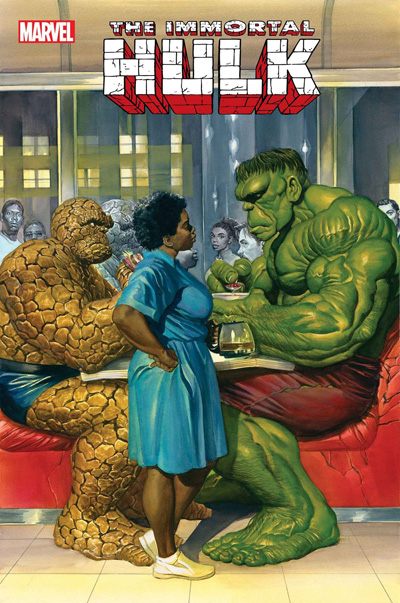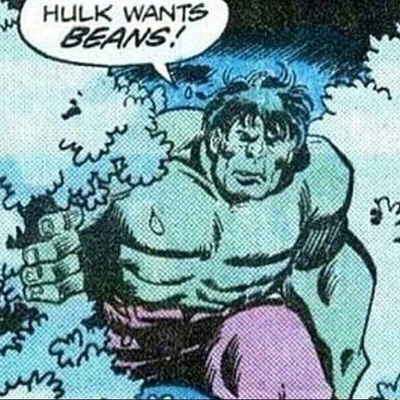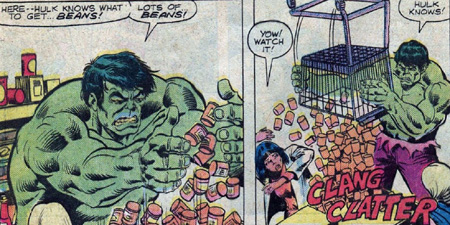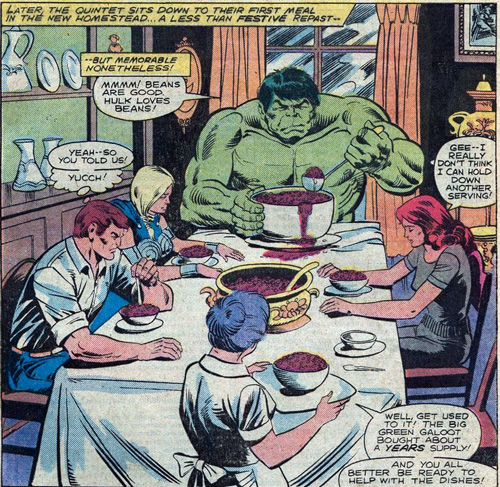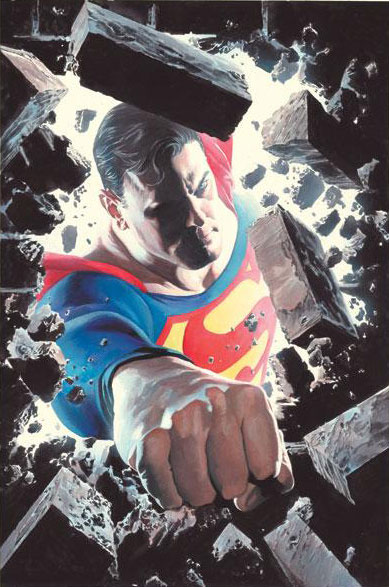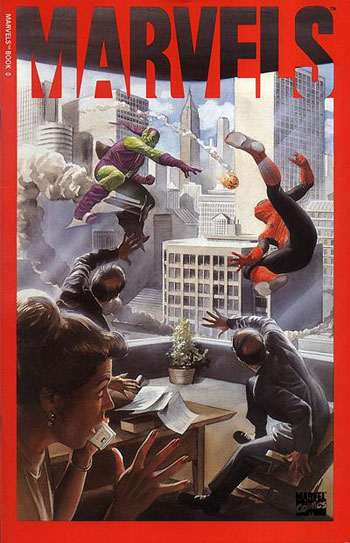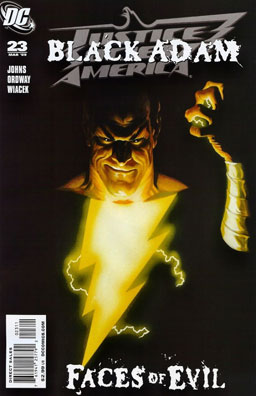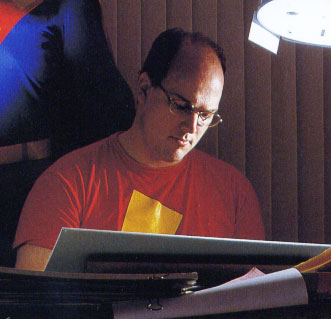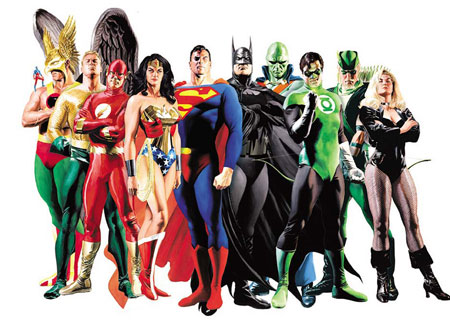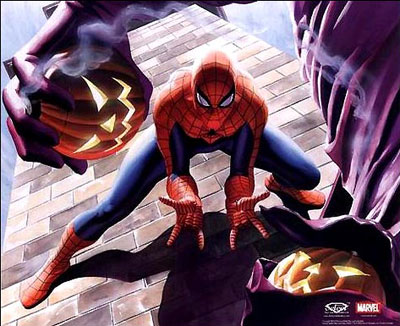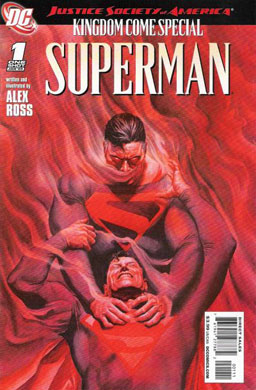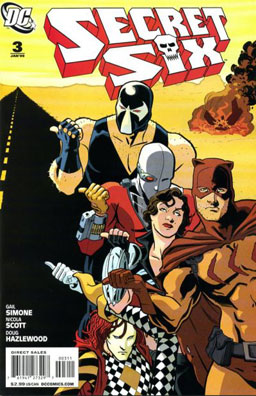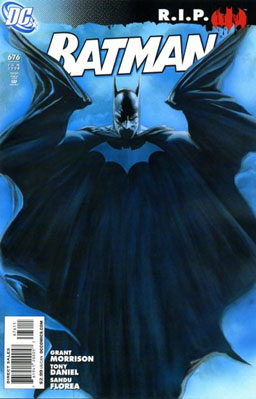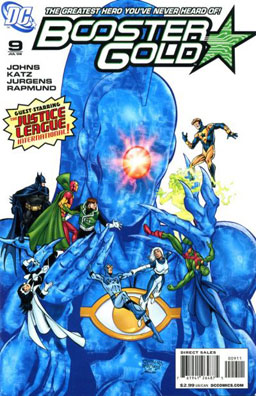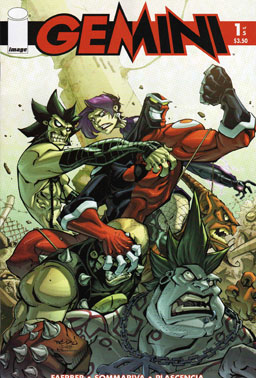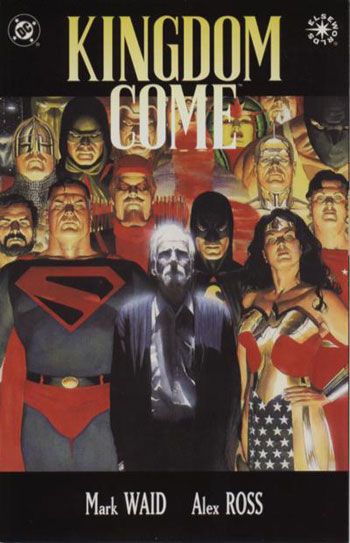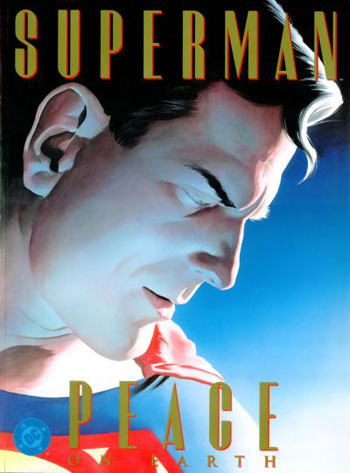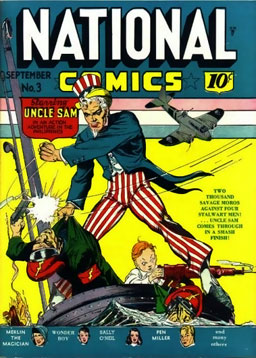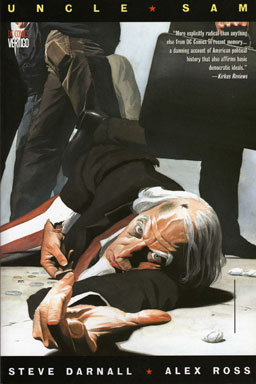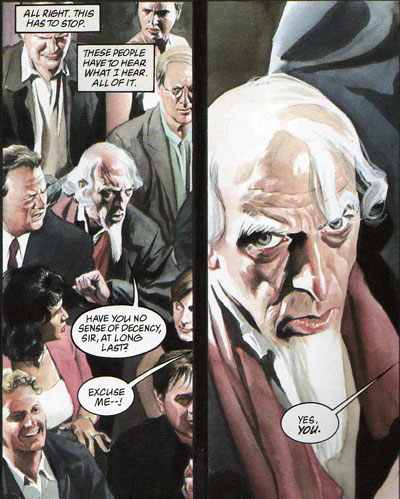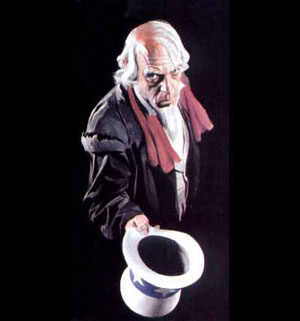No one will ever be able to claim that Lubbock is a major comics/cartooning center. Sure, we’ve got a good comics shop, our local library stocks comics, and we’ve even got the Lubbock Sketch Club, which works to nurture local artists and cartoonists. But we certainly don’t have a reputation as a comics hub.
However, you’d be surprised how many connections to the comics and cartooning world that we do have here. Let’s take a quick look at our hometown heroes…
1. Dirk West: Probably the artist that Lubbockites are most familiar with, West was born in Littlefield but grew up in Lubbock. After graduating from Tech, he spent a few years working as Uncle Dirk, the host of a local children’s TV show, and opened up his own advertising agency.
In the early ’60s, West started contributing single-panel sports cartoons to the A-J that featured the mascots of the teams in the Southwest Conference standing around and talking about SWC football. He created Raider Red and Nebraska’s Herbie Husker, and his weekly cartoons were must-read events here in Lubbock. They got lots of attention throughout the SWC — usually because some team (Ahem: the Aggies) would get mad about how they were portrayed.
West served a term as Lubbock mayor in 1978 and died in 1996.
You can see a gallery of some of West’s cartoons right here, and I’m posting a couple of my personal favorites below.
 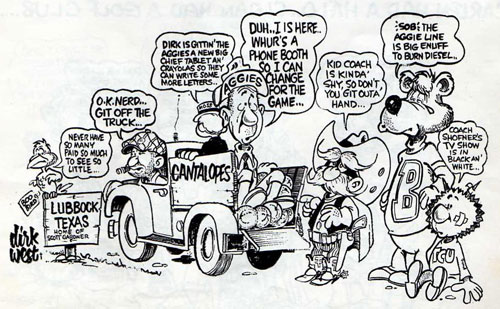
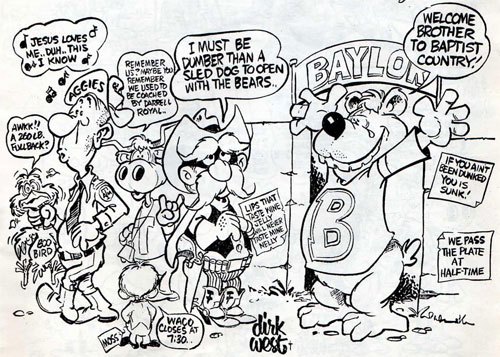
2. Alex Ross: One of the best known comics pros anywhere, Ross was born in Portland, Oregon, but spent much of his childhood here in Lubbock. His specialty is not traditional comics art, but painting — specifically beautiful, photorealistic painting of superheroes. His characters don’t look like steroid freaks wearing painted-on costumes — Ross knows how to draw realistic muscles (and realistic fat!), as well as clothing that actually wrinkles like clothing. He knows how to use light and shadow, how to make super-people look like people — and his artwork is still incredibly exciting and cinematic.
Some of his best known works include “Marvels” and “Earth X” for Marvel, “Kingdom Come” and “Uncle Sam” for DC, and covers for “Astro City,” “Justice Society,” and more.
I’m plugging in a few examples below.
 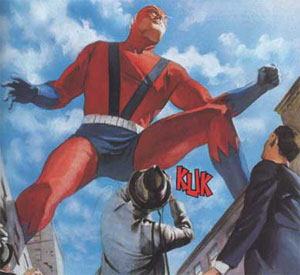
Above: Giant-Man from “Marvels”
 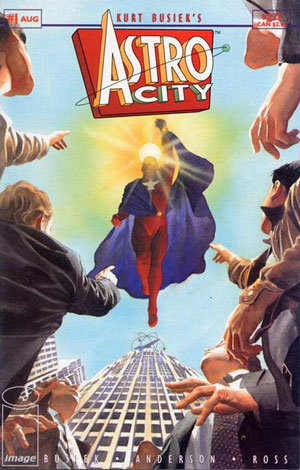
3. Jack Tippit: A gag cartoonist, Tippit attended Texas Tech but tranferred to Syracuse. He was a pilot in both World War II and the Korean War. His best-known work was a gag strip called “Amy,” who was basically a female Dennis the Menace. He also drew a strip called “Dr. Bill” and published cartoons in the New Yorker, Look, the Saturday Evening Post, and other magazines. For a while, he drew the “Henry” comic strip.
Here are a couple of his cartoons.
 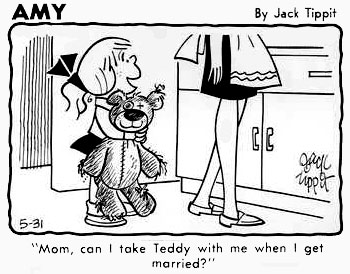
 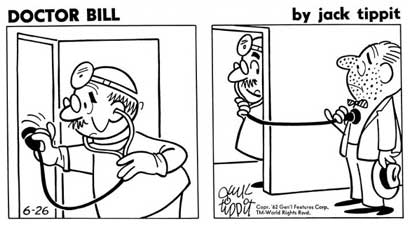
4. Scott Williams: I know almost nothing about him, to be honest. Yes, my Google-Fu is weak. But Robert Mora, who runs Star Books and Comics here in town, says that he’s a Lubbockite.
Williams is an inker — in fact, he inks almost all of Jim Lee’s work. If you don’t know Jim Lee, he’s one of the big artists, pencilling everything from the X-Men to Superman and Batman, and he was one of the founders of Image Comics in the 1990s.
“Aww, who cares? Williams just traces Lee’s stuff!” Ohh, that’s what you think, kid. You can’t be an inker without displaying a heck of a lot of artistic skill. Don’t believe me? Okay, here’s a sample of some of Lee’s uninked pencils:
 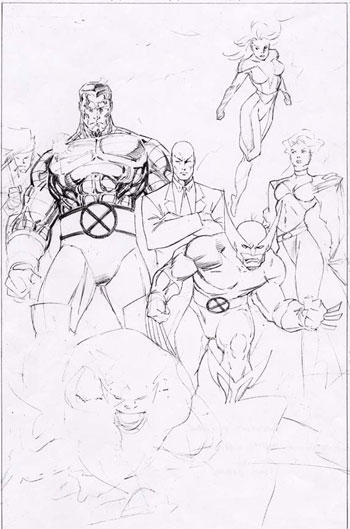
And here’s the same piece after Williams inked it:
 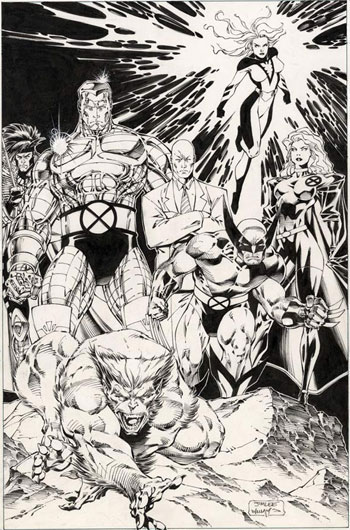
(Both of the pictures above come from Inkers.org, a blog produced by professional comics inkers. Check them out if you’d like more info on inking as a career.)
Pencillers are always very picky about their inkers — a good inker can make good artwork even better, and a bad one can doom the best pencils in the world. There’s a reason why Lee has stuck with Williams for all these years.
5. The Blob: No, not the evil glob of protoplasm from the 1958 horror flick — this is Fred J. Dukes, a mutant supervillain who was created by Stan Lee and Jack Kirby in 1964 for “X-Men #3.” He’s not a particularly handsome super-guy.
 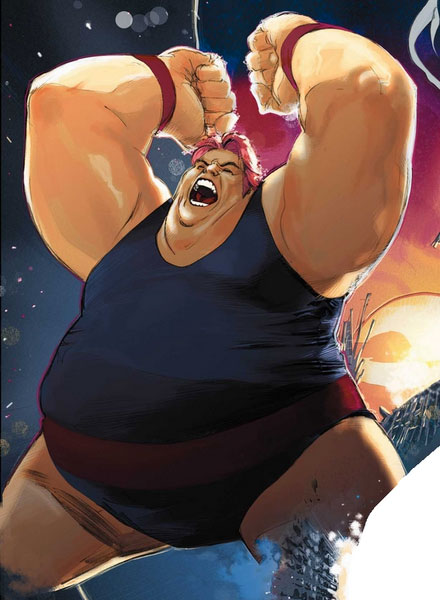
His primary powers involve superstrength, toughness, and gravity control — basically, he can increase the pull of gravity on himself to make it almost impossible to move him.
Yeah, the Blob’s mutant powers involve him being really fat. Nobody ever said Marvel Comics was a very politically correct place back in the ’60s.
So what’s he doing on this list? Well, according to his official Marvel Comics biography, Fred was actually born here in Lubbock.
Gee, since he’s a native son, maybe we should name the Walk of Fame after him?
So how ’bout it, folks? Do you know of any other comics professionals who are from the Lubbock area? How about comics characters? Drop me a line and let me know, and I’ll add ’em to the list…
